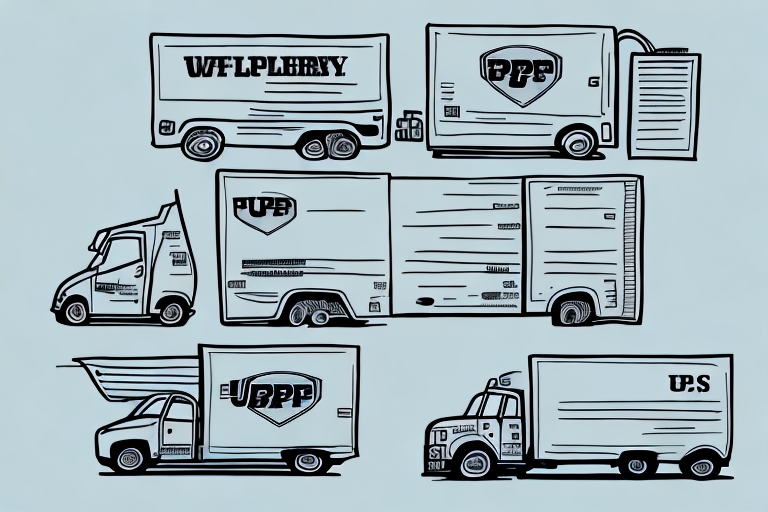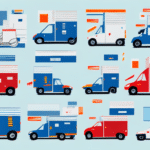Understanding the Shipping Giants: UPS vs. USPS
When it comes to shipping packages and parcels, most people are familiar with the two industry giants: UPS and USPS. Renowned for handling packages of all shapes and sizes, these delivery services are celebrated for their reliability and efficiency. However, the relationship between UPS and USPS is more intricate than just competition. This article delves into the history, services, and dynamic interplay between these two major players in the shipping industry.
The History of UPS and USPS
Origins and Growth
The United States Postal Service (USPS) has a legacy that dates back to the colonial era, making it one of the oldest postal systems in the world. Established to deliver mail and packages across the vast expanse of the United States, USPS has been a cornerstone of American communication and commerce.
In contrast, United Parcel Service (UPS) was founded in 1907 by James Casey as a messenger service in Seattle, Washington. Over the decades, UPS expanded its operations globally, evolving into a leading provider of logistics and package delivery services.
Evolution Over Time
While USPS has consistently served every address in the United States, UPS has focused on offering tailored solutions for businesses and individuals requiring more specialized shipping services. This strategic focus has enabled both entities to thrive in their respective niches, sometimes collaborating to enhance their service offerings.
Comparing Services: UPS vs. USPS
Service Offerings
UPS provides a comprehensive range of services, including domestic and international shipping, freight forwarding, and specialized logistics solutions. Its international shipping options cater to businesses looking to expand globally.
USPS primarily focuses on domestic shipping, offering services like Priority Mail and First-Class Package Service. While USPS does provide international shipping through its Global Express Guaranteed service, its offerings are generally more limited compared to UPS.
Pricing and Delivery Times
When it comes to shipping rates, USPS is often the more affordable option for smaller, lighter packages. According to the latest USPS pricing guide, services like First-Class Mail offer competitive rates for parcels under 13 ounces.
UPS, on the other hand, tends to charge more for shipping but compensates with faster delivery times. For instance, UPS Next Day Air can deliver packages by the next business day, which is ideal for urgent shipments.
Package Tracking and Insurance
UPS offers detailed tracking information with real-time updates and estimated delivery times. Their tracking system is integrated with UPS My Choice, allowing customers to receive proactive notifications.
USPS provides basic tracking services, which are sufficient for standard shipments. However, UPS's tracking capabilities are generally more robust, especially for high-value or time-sensitive packages.
Partnerships and Competition
Despite being competitors, UPS and USPS often collaborate to enhance their service offerings. For example, USPS might handle the final mile delivery for UPS packages in certain regions, leveraging USPS's extensive network to reach every address in the country.
This symbiotic relationship allows both companies to optimize their operations and provide comprehensive coverage. However, competition remains fierce as both strive to capture greater market share and improve customer satisfaction.
The Impact of COVID-19 on Shipping Services
The COVID-19 pandemic significantly affected the shipping industry, accelerating the shift towards e-commerce and increasing demand for delivery services. Both UPS and USPS experienced a surge in package volumes, necessitating adaptations in their operations.
According to a Statista report, e-commerce sales in the US grew by over 30% during the pandemic, directly impacting delivery service providers. Both companies invested in expanding their logistics capabilities and implementing safety measures to handle the increased demand.
The Future of Shipping: Trends and Innovations
Technological Advancements
Technology plays a pivotal role in the evolution of shipping services. Both UPS and USPS are investing in automation, robotics, and data analytics to streamline operations and enhance efficiency. UPS Innovation showcases their efforts in integrating advanced technologies to optimize delivery routes and improve package tracking.
Sustainability Initiatives
Environmental sustainability is becoming increasingly important in the shipping industry. UPS has committed to reducing its carbon footprint by investing in electric vehicles and sustainable packaging solutions. Similarly, USPS is exploring eco-friendly initiatives to minimize environmental impact.
Customer Service and Handling Issues
Managing Complaints
Effective customer service is crucial for maintaining customer trust and satisfaction. UPS is renowned for its comprehensive customer service programs, offering multiple channels for support, including phone, email, and live chat.
USPS has faced criticism for slower response times and limited support options. However, recent efforts aim to improve their customer service infrastructure to better address customer concerns and enhance overall satisfaction.
Handling Lost or Damaged Packages
Both UPS and USPS have established procedures for addressing lost or damaged packages. UPS provides a robust claims process, allowing customers to file claims online for reimbursement or resolution. USPS offers similar services but may have longer processing times.
Conclusion: Choosing the Right Service for Your Needs
The decision between UPS and USPS hinges on various factors, including package size, delivery speed, destination, and budget. UPS is ideal for those requiring fast, reliable delivery with extensive tracking and international options. In contrast, USPS offers cost-effective solutions for domestic shipping, especially for smaller packages.
By understanding the strengths and limitations of each provider, businesses and individuals can make informed decisions to meet their specific shipping requirements effectively.




















